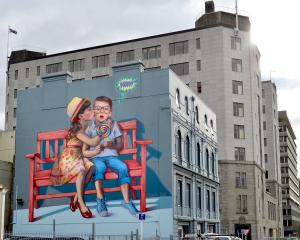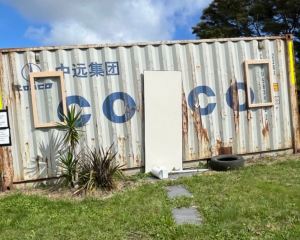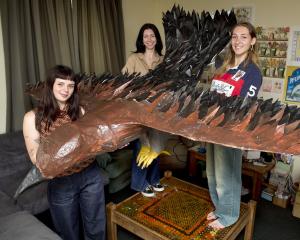Art trends come and go. But one thing that hasn't changed is our fascination with the human body.
The Otago Polytechnic School of Art is one of the last art schools in the country to offer comprehensive life drawing training to students.
New Zealand's oldest art school has 110 students studying life drawing and 13 studying life sculpture.
The subject is compulsory for all first, second and third-year art students.
"It's basically about observation. The students learn about perspective, which is really important," head of sculpture Michele Beevors says.
"You're trying to situate the nude model in space.
"You're teaching perspective and mark-making and anatomy - those traditional things," Beevors says.
"It's helpful because it teaches them to slow down when they're looking. For an artist, it's about looking and then capturing what you see. It's revelatory.
"Every artist has a moment where they get it.
"It's a cornerstone of what we teach. We ask students to consider the history of what they're doing. There's a triad of history, theory and social aspect.
"Today's culture is about immediacy, so everything gets glossed over and the differences and subtleties get lost. But we have a history of 2000 years of making art in our own image, so there's all that history to plunder.
"In the '80s, we went through a period where nobody was studying life drawing - partly because of the postmodernism rethinking in terms of feminism and other terms of difference. Now we have a resurgence and we're thinking through those ideas.
"A lot goes into thinking about animation. Photographs are no truer than a life drawing is. You can't tackle good photos and understand composition, light and dark."
Beevors says her students apply the old craft across the art spectrum.
"They're always doing stuff that blows me away. They're very inspiring. They come up with such diverse work.
"You get the traditional and the not-so-traditional," she says.
"People will often use it to work out their demons. One girl is obsessed with strawberries and has been making these giant strawberries. Another student is quite a large woman and has been looking at body issues by making oversized images of herself."
Beevors knows a bit herself about manipulating traditional sculpture to deliver a modern message.
She had a run-in with the Dunedin Public Art Gallery last November over her controversial "Debbie Does Disney" exhibition when six sexually explicit dwarves were cut from the exhibition.
"Art has often pushed the boundaries. But traditionally, there was no distinction between science and art. I mean, Leonardo was an inventor, so there's definitely that crossover."
Art students in the 15th century, including Leonardo da Vinci, were expected to have a detailed knowledge of human anatomy.
Da Vinci spent many hours dissecting corpses to learn about anatomy at Santa Maria Nuova in Florence and hospitals in Milan and Rome.
His master, Andrea del Verrocchio, insisted his students learn about the anatomy of the human body, studying muscles, tendons and other visible anatomical features.
Through this, da Vinci gained a detailed knowledge of anatomy and light, qualities that radiate in his most famous painted works, Mona Lisa, The Last Supper and the Virgin of the Rocks.
Otago School of Art life drawing lecturer Anita De Soto says the naked body can be a confronting subject for young artists.
"It is definitely one of the more challenging forms to represent. It's so complex. There are bones and muscles covered by layers of skin.
"But when you become familiar with looking at nudes, it can become quite liberating. You get over your own body issues.
"I think most people have issues about their body, whether they're imagined or not.
"We draw people all shapes and sizes. We're lucky that we have some very confident models."
The art school usually uses students as nude models. The models are paid a little over $20 an hour after tax.
"It's seen as a discipline that assists a personal studio practice to convey ideas on to paper. It's just learning how to see.
"It can be quite mathematical in terms of proportion and perspective," De Soto says.
"I like to contemporise figure painting. Make it conceptual and not just a story of a figure. I like to use the figure as a means to convey my ideas about human frailty. It's a tool and a means of communication."
Earlier this year, 2008 University of Otago Frances Hodgkins Fellow Heather Straka based her Hocken Gallery exhibition, "The Sleeping Room", on studies of dead bodies in the Otago School of Medical Science dissecting room.
"As an artist, you create an autopsy of your life models every day. You cut them up and you put them back together for your own ends," Straka said.
"The anatomist is interested in the central structure and the artist is interested in the aesthetics."
• On site
The Otago Polytechnic School of Art annual "Site" exhibition will be held at the art school from November 21 to 26. The public is welcome and entry is free. Many of the works are for sale.
• Learn to draw
Dunedin artist Steev Peyroux has organised life drawing classes every Wednesday night at the Otago Polytechnic School of Art for interested members of the public. Email: steevp@tekotago.ac.nz












